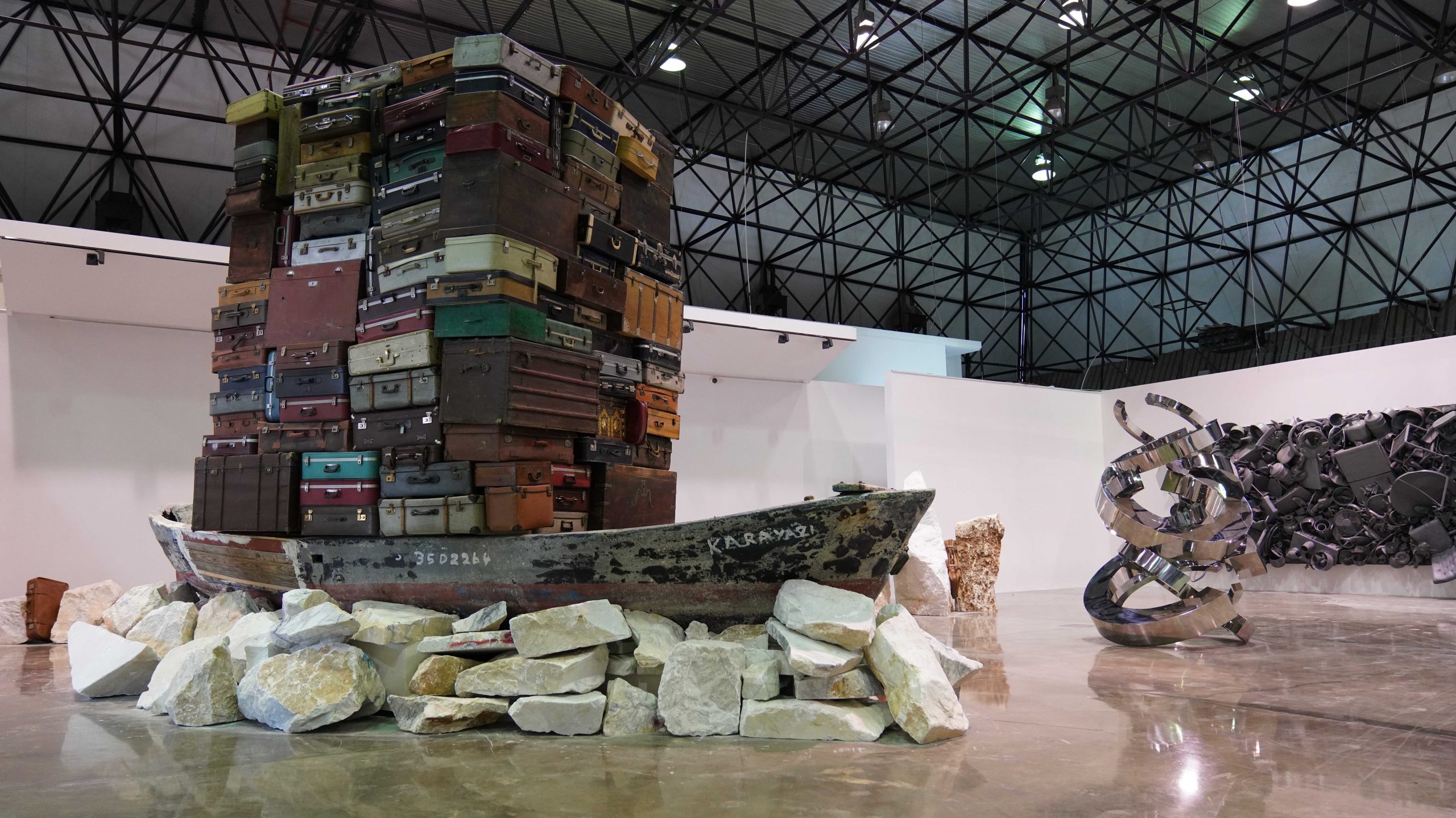Infidel Quarter | Ahmet Güneştekin
Arte
Kültürpark İzmir, Mimar Sinan, Şair Eşref Blv. No.50, Konak/İzmir, İzmir, 35220 , Turkey
03/11/2022 - 05/03/2023
Gunestekin Foundation is pleased to present Ahmet Güneştekin’s solo exhibition, Infidel Quarter, which runs from November 3rd, 2022, to March 5th, 2023, in Izmir Kültürpark. The exhibition, sponsored by Izmir Metropolitan Municipality, brings together artist’s works from various media focusing on the history of migration and displacement in the context of population exchange. Curated by Şener Özmen, the show includes sculptures, in which the artist fills metal forms with stones, video works and large-scale installations of objects unique to the space.
Infidel Quarter questions the concept of mübadele (human exchange), which means the spatial, ethnic, and socio-cultural separation of groups generalized by certain definitions and subjected to separate policies. Associating migrations that dominated the twentieth century and continue to spread throughout the world with the population exchange that detached people on both coasts of the Aegean Sea from their past and forced them to build their lives elsewhere, the exhibition creates a multi-layered web of meaning and displays how the ghosts of the past haunt the world.
How can one interpret a past trauma when there is no existing context, when one does not have the language or vocabulary to recount the event? This is where Güneştekin wants to start: by placing a narrative of the past that attempts to produce a language in which elements excluded by the dominant discourse’s narrative may be separate and in conflict but are at the same time, and most importantly, open to dialogue. Using objects in his installations as a powerful means of displaying the traumatic past in relation to a post-witness present, the artist expands the historical narrative’s fields of reference.
Güneştekin’s fragile yet tightly arranged objects hold the viewer in the present and push them toward the future by reminding them of the past. The objects he uses to portray existence disappear and change along with their function, and thus acquire new meanings. Objects broken away from their roots are indicators which have replaced the ties between people. He deals with the feeling of disappearing in existence and existing in absence. For the artist, the presence in absence derives from being a reminder of memories and past experiences.
The installations reveal a crowd of people who become embodied through their belongings. Suitcases and trunks that keep the objects of life together; shoes that embody the imaginary existence of memories; and abstract rocks that recall the destroyed and left-to-rot ruins worn out by time. They all indicate a physical presence lost or removed. Every object an uncanny harbinger of displacement that has forced them to go far away, the burden of the history it carries within it still as heavy no matter how mercilessly time drifts away. It takes a long time to settle into a place. In reality, when the roots belong elsewhere, nothing that is built can quite settle. The mindset that identified Greek with being Orthodox and Turkish with being Muslim did not coincide with the experiences of people on both coasts of the Aegean Sea, who were displaced and who viewed their geographical roots as part of their identity. And yet, it was believed that a geographical and cultural area that has been home to interwoven, complex languages and beliefs for centuries could be entirely dissociated.
Even though they differ in detail, the population exchange between Greece and Turkey shares a common idea with similar contemporary practices as it addresses the past and origins of different groups in theory and practice: the rearrangement of categorized human bodies in terms of location. Güneştekin relates this approach to the discrimination policies of the century we live in. He argues that we should see the manifestation of exchange beyond cultural inheritance and begin to think more about the ethnicity assigned on people’s bodies, regardless of where they were born and raised. He questions the wide-ranging effects of the rearrangement of diversity that was put into action with the exchange and how related policies have been produced. He considers not only what has been separated but also the classifications recognized for the purpose of separation, which haven’t been questioned enough. Bearing the same name as Mıgırdiç Margosyan’s book Gâvur Mahallesi (Infidel Quarter), the exhibition follows these ideas and emphasizes cultural diversity, saying that people sharing the same geography have deeper bonds than the religion that defines the ethnic boundaries in the twentieth century’s international conventions.
Güneştekin believes that the condescending aspect of discriminatory practices, as in all the mass displacements that took place during the exchange and afterwards, has become more visible with today’s international waves of refugees and migrants. At a time when we witness other levels of segregation policies, ranging from the construction of border walls to travel and visa restrictions, anti-refugee campaigns, and negotiations over refugees, the Infidel Quarter may contribute to the understanding of the multifaceted historical, cultural, and political effects of being human by engaging with different forms of humanism. The exhibition offers a new space to explore the past with the present from the perspective of alterity through a multidisciplinary study that relates form, material, and surface.





